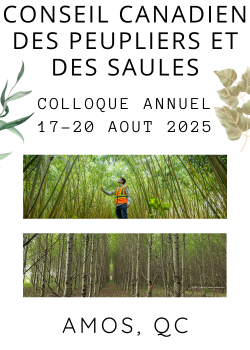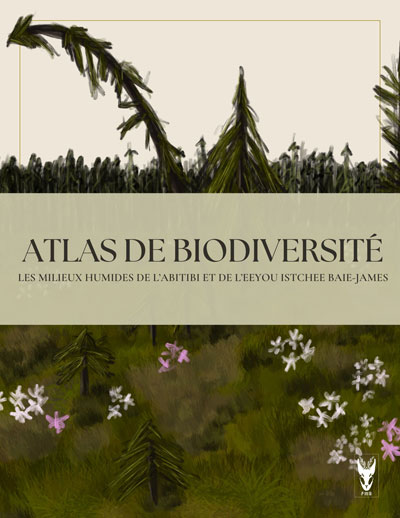Research Programme
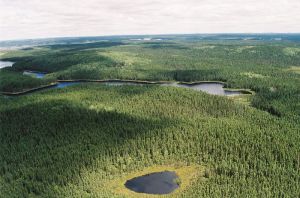
Mélanie Desrochers
The research activities of the Forest Research Center (CEF) encompass several disciplines, ranging from gene organization to landscape level. The applications developed range from genetic improvement to the creation of new silvicultural approaches.
To achieve its scientific and social mission, the CEF's scientific program is based on four integrating research areas, which are themselves divided into four to seven themes.
AXIS I. Genetics, genomics, molecular and functional ecology, and ecophysiology
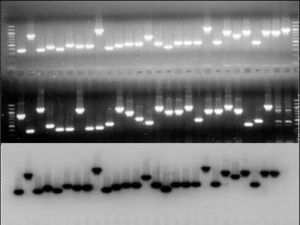
André Gagné
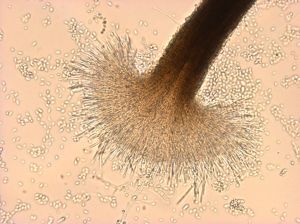
Karine Plourde
This axis brings together teams that study the genetics, genomics, and ecophysiology of plants, trees, arthropods, and microorganisms in order to understand the organization and function of genomes, as well as the evolution and role of their molecular diversity in both space and time. Within these teams, researchers share their expertise to elucidate the links between genome attributes and the biology of organisms.
A) Genomics and diagnostic molecular markers
Understanding the organization, functioning and evolution of genomes and hence how the role of their diversity both spatially and temporally affects the diversity of ecosystems (Bernier, Bousquet, de Lafontaine, Khasa, Lajoie, Laforest-Lapointe, Porth, Villarreal). This research leads to metagenomic, phylogenomic and genomic screening approaches for diagnostic markers with many applications in taxonomy, biogeography, forest health, environmental genomics and restoration, as well as in genomic selection for the improvement of forest species in the context of climate change.
B) Intrinsic molecular and physiological factors
Identify intrinsic molecular (Villarreal) and physiological (Delagrange, Deslauriers, Girard, Handa, Lapointe, Messier, Paquette, Shipley, Sonnentag) factors that control the growth of plants, trees and mycorrhizal (Khasa, Lajoie) or bacterial (Laforest-Lapointe) symbioses. This research has obvious applications for commercial species, but also promising opportunities in the fields of agroforestry and ecological restoration of degraded, damaged or destroyed ecosystems (3-D) including bioremediation.
C) Micropropagation of forest species
Mastering micropropagation techniques for plants and forest species to multiply improved lines and enable innovative applications, notably the production of phytomolecules (Lapointe, Porth, Villarreal).
D) Population genetic ecology
Using molecular, genomic and phenotypic attribute approaches, better understand genetic diversity and population structure in mammals, plants, trees and microorganisms, and identify the responsible factors such as coevolution, natural selection and demographic factors including migration and gene flow, inbreeding, and population collapse effects (Asselin, Bergeron, Bernier, Bousquet, d'Orangeville, de Lafontaine, Dupras, Khasa, Porth, Tremblay, J.A., Vellend). This research has multiple applications in monitoring and conserving natural genetic diversity, particularly in the context of mitigating the effects of climate change, to better understand how populations can adapt locally or have to migrate to reach their optimal ecological niches.
E) Fight against pathogenic fungi and insect pests
Using genomic, molecular and ecophysiological approaches, refine the means of combating pathogenic fungi and insect pests (Bauce, Bernier, Despland, Porth).
F) Functional Ecology and Ecophysiology
Exploring the fundamental life strategies of species and researching morphological, physiological, and phenological characteristics that determine their individual performance (functional traits). Understanding and interpreting variation in species morphology and physiology in the context of climate change and in response to different environmental gradients. (CBuddle, D'Orangeville, Delagrange, Fenton, Houle, Lajoie, Laliberté, Lapointe, Munson, Rossi, Paquette, Shipley, Urli, Handa, Deslauriers, Villemaire-Côté).
AXIS II. Population and community ecology and conservation biology
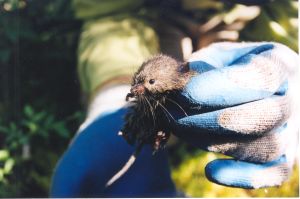
Sophie Brugerolle
This axis aims to understand the distribution and viability of forest organisms and their interactions within communities, particularly in relation to processes and interactions such as predation, competition, and dispersal. It brings together teams interested in the study of these factors in both natural and managed environments. All with a view to conserving the biological diversity of populations and communities of organisms found in managed areas.
A) Selection and occupation of forest habitats Understanding forest habitat selection at different spatial scales in vertebrate and invertebrate animals (Bélisle, Cimon-Morin, Despland, Doyon, Drapeau, Dupuch, Fortin, D., Handa, Ibarzabal, Imbeau, St-Laurent, Mazerolle), Montoro Girona, Tremblay, J.-P., Tremblay, J.A., Villemaire-Côté) and in plants, bryophytes and lichens (Fenton). This research responds to a crying need to understand the mechanisms involved, through the grouping of analytical approaches and complementary data sets.
B) Functional links between fauna and flora in the forest Understanding the functional links between habitat, biology and the behavior of animals and plants in natural and managed environments. This is to develop conservation strategies favorable to the maintenance of biological diversity in forests (species, functional, genetic, evolutionary, structural, trophic diversity, etc.). (Bauce, Côté, Doyon, Drapeau, Dupuch, Imbeau, Messier, Perez, Montoro Girona, Munson, Work, Mazerolle, Filotas, Despland, Laliberté, Tremblay, J.-P., Tremblay, J.A., Urli, Vellend, Villemaire-Côté).
C) Environmental stress on components of the forest ecosystem Identify the intrinsic factors (individual differences, reproductive success, bioenergetic considerations) contributing to the understanding and prediction of the response of forest fauna and flora to environmental stresses, particularly in the context of climate change (Achim, Asselin, Bauce, Bélanger, Bélisle, Boucher, d'Orangeville, de Lafontaine, Delagrange, Deslauriers, Despland, Doyon, Drapeau, Fenton, Girard, Handa, Maheu, Laforest-Lapointe, Lajoie, Mazerolle, Messier, Montoro Girona, Paquette, Perez, Potvin, Rivest, Rossi, Schneider, Shipley, St-Jacques, Tremblay, J.A., Vellend, Villemaire-Côté, Work, St-Laurent, Tremblay, J.-P., Urli).
D) Biodiversity and functioning of forest ecosystems Measure the importance of diversity (in all its forms), and its loss, for the functioning of forests. Identify the species most vulnerable to management, global changes and different silvicultural approaches (partial cutting, retention, clearcutting, salvage cutting in forests disturbed by fire or insect epidemics) and evaluate their usefulness as indicators of biodiversity on plants, birds and mammals. (Bauce, Bergeron, Bouchard, Buddle, Delagrange, Doyon, Drapeau, Dupuch, Laforest Lapointe, Fenton, Fortin, Handa, Imbeau, Laliberté, Leduc, Maheu, Moreau, Messier, Montoro Girona, Paquette, Ruel, Schneider, Tremblay, J.A., Vellend, Villemaire-Côté, Work, St-Laurent, Mazerolle).
AXIS III. Functioning, dynamics and services of forest ecosystems
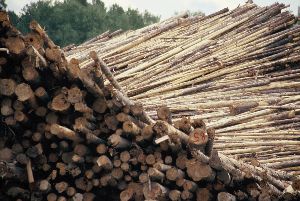
Mélanie Desrochers
This axis considers the dynamic and functional processes of forests and aims to understand the role of natural disturbances on their dynamics at multiscalar scales.
A) Natural dynamics of forest ecosystems Study and compare the natural dynamics of forests in different regions of Canada. Characterize the properties of old-growth forests in terms of composition and structure. Estimate how the habitats found there provide essential support for maintaining biodiversity. See how their maintenance poses particular challenges for forest management. Contribution of old-growth forests to the carbon balance of ecosystems. (Achim, Asselin, Bergeron, Yan Boucher, Cavard, de Lafontaine, Doyon, Fenton, Girard, Handa, Kneeshaw, Laforest-Lapointe, Leduc, Martin, Messier, Montoro Girona, Moreau, Morin, Munson, Perez, Pothier, Ruel, Schneider, Simard, Tremblay, J.-P., Tremblay, J.A., Valeria, Villemaire-Côté). Understanding the influence of climate on tree growth and forest productivity, disturbance regimes (Achim, Arseneault, Asselin, Bauce, Bergeron, Bouchard, Yan Boucher, d'Orangeville, de Lafontaine, Doyon, Kneeshaw, Leduc, Simard, St-Jacques, Valeria), on the carbon cycle of forests and peatlands (Béland, Bélanger, N., Boucher, J.-F., Cavard, Côté, Doyon, Paré, Peng, Potvin, Rossi, Simard, Sonnentag, Valeria) and predicting the future dynamics of these same ecosystems (Bergeron, Béland, Bouchard, Yan Boucher, d'Orangeville, de Lafontaine, Doyon, Jutras, Laforest-Lapointe, Messier, Vellend, Filotas, Valeria).
B) Forest regeneration Understanding the influence of biotic and abiotic factors on regeneration (post-planting stress, re-production, competition, herbivory, agroforestry) (Asselin, Bélanger, N., Boucher, J.-F., Delagrange, d'Orangeville, DesRochers, Doyon, Dupuch, Faubert, Fenton, Girard, Guittonny, Handa, Khasa, Kneeshaw, Lajoie, Laforest-Lapointe, Leduc, Messier, Montoro Girona, Moreau, Morin, Munson, Paquette, Potvin, Ruel, Rossi, Schneider, Shipley, Simard, Sirois, Thiffault-Tremblay, J.-P., Morgane Urli, Valeria, Vellend, Villemaire-Côté).
C) Soil and water quality indicators Develop indicators of soil, water and flow regime quality based on different forestry practices (Bélanger, N., Côté, Handa, Jutras, Maheu, Munson, Rivest).
D) Impact of forestry practices Understanding the impact of forestry practices on the water cycle, soil biogeochemistry and considering the physicochemical and biological aspects of soil fertility (mineral nutrition, nitrifying bacteria, symbiotic fungi) (Bélanger, N., Bradley, Côté, Faubert, Handa, Jutras, Khasa, Martin, Montoro Girona, Moreau, Munson, Simard, Sirois, St-Laurent, von Sperber), Tremblay, J.A..
E) Remote sensing and computerized decision-making tools Develop methods for analyzing remote sensing data, as well as computerized management and decision-making tools to better understand current carbon resources and stocks, to better plan management scenarios at the landscape scale and which integrate conservation, intensive management and extensive management of forest areas (Achim, Bélanger, N., Bergeron, Cumming, Delagrange, Doyon, Fenton, Fournier, Girard, Jutras, Kneeshaw, Béland, Laliberté, Leduc, Martin, Messier, Moreau, Paquette, Peng, Perez, Rivest, Schneider, Simard, Sonnentag, Tremblay, J.A., Filotas, Valeria).
F) Ecological services The concept of ecological services implies that forests play an important role for society. We therefore seek to determine the impact of climate change and disturbances (natural and anthropogenic) on the capacity of forest ecosystems to provide ecological services (Asselin, Boucher, J.-F., Cimon-Morin, Dupras, Handa, Jutras, Kneeshaw, Laforest-Lapointe, Messier, Moreau, Munson, Paquette, Perez, Pham, Potvin, Rivest, Schneider, Simard, Sirois, Vellend, Filotas, Valeria, Ziter); quantify the ecological services provided by urban vegetation and understand the population's perception of these ecological services (Pham, Sivarajah, Teitelbaum); evaluate the role of the forest for different health services (well-being, heat reduction, etc.) (Smargiassi) and develop approaches to represent the forest and its response to multiple stresses through art (Trudel).
G) Urban Forests and Green Natural Infrastructure Determine the impact of climate and global change on our cities' green infrastructure, particularly trees, particularly in relation to human health (Cimon-Morin, Despland, Delagrange, Drapeau, Dupras, Handa, Kneeshaw, Lajoie, Laforest-Lapointe, Maheu, Mazerolle, Messier, Munson, Paquette, Perez, Pham, Sivarajah, Work, Ziter). Understand green infrastructure planning practices and the impacts of this infrastructure on social equity and the daily living environment (Pham, Teitelbaum).
H) Agroforestry Develop innovative agroforestry practices and assess their ability to provide ecosystem services (Rivest, Khasa, Maheu, Nolet, Dupras, Bélanger, N. DesRochers, Munson).
AXIS IV. New silvicultural approaches and sustainable forest management strategies
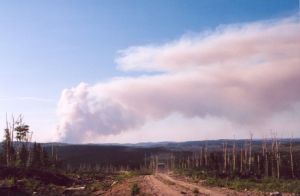
Sophie Brugerolle
This axis establishes the essential parameters for stand-scale silviculture as well as for innovative approaches to ecosystem management at the landscape scale. These new approaches are adapted to the principles of sustainable forest management in a context of climate change and are linked to the use of non-timber forest resources.
A) Planning and impact of forest management scenarios Develop computerized decision-making and management tools to better plan our development scenarios at the landscape scale and which integrate conservation, intensive development and extensive development of forest areas (Achim, Asselin, Beaudoin, Béland, Bouchard, Boucher, J.-F., Bergeron, Cavard, Cimon-Morin, Cumming, d'Orangeville, Doyon, Dupras, Fournier, Kneeshaw, Leduc, Martin, Messier, Montoro Girona, Moreau, Paquette, Peng, Schneider, Tremblay, J.A., Filotas, Valeria).
B) Intensive forestry and ligniculture Developing approaches to intensive forestry and ligniculture (Achim, Beaudoin, Bélanger, N., Bernier, Bousquet, Bradley, Buddle, Côté, Delagrange, DesRochers, Faubert, Khasa, Messier, Moreau, Paquette, Potvin, Rivest, Schneider, Thiffault, Villemaire-Côté). The work in Axis I is closely linked to this theme.
C) Management approaches (at the stand and landscape scales) Develop new silvicultural approaches at the stand scale (silvicultural practices: Achim, Delagrange, d'Orangeville, Doyon, Handa, Kneeshaw, Martin, Messier, Munson, Montoro Girona, Pothier, Ruel, Sirois, Thiffault, Valeria) and at the landscape scale (management strategies: Asselin, Bauce, Bergeron, Bouchard, Drapeau, Doyon, Kneeshaw, Leduc, Messier, Moreau, Montoro Girona, Morin, Schneider, Filotas, Tremblay, J.-P., Valeria) based on our knowledge of the natural dynamics of forests.
D) Indigenous forestry Identifier les défis auxquels font face les communautés autochtones en réponse à l'aménagement forestier réalisé sur leurs territoires ancestraux et développer des approches novatrices, basées notamment sur les savoirs locaux des communautés autochtones et non autochtones (en lien avec le thème 3), pour y faire face (Asselin, Beaudoin, Cimon-Morin, Drapeau, Kneeshaw, Mazerolle, Potvin, Thiffault).
E) Conservation and ecological restoration of forest ecosystems (or environments) Develop technologies that ensure the maintenance of forest ecosystems during land development and develop healthy soil reconstruction (technosols), the addition of important biological legacies for fauna and flora and sustained afforestation of human-affected sites such as former mines, sand pits, gravel pits, agricultural and industrial wastelands and highway rights-of-way. Restoration efforts can be carried out as part of offset projects and also aim to increase biodiversity and the return of ecosystem services such as carbon sequestration, water filtration and erosion control. (Bélanger, Cumming, d'Orangeville, Fenton, Guittonny, Khasa, Kneeshaw, Martin, Mazerolle, Sivarajah, Munson, Paquette, Rivest).
F) Mitigation and adaptation to climate change Quantify the effects of forest management and various forestry practices on the carbon cycle (fluxes and stocks) in ecosystems and forest products as well as on all radiative forcing agents (including greenhouse gases (GHG), surface albedo and volatile organic compounds), using empirical measurements, modeling, life cycle analyses (LCA) or other approaches and methods. Development of silvicultural tools and approaches to increase the resilience and resistance of forests to changes in environmental conditions (Achim, Doyon, Cavard, Martin, Moreau, Paré, Schneider).









